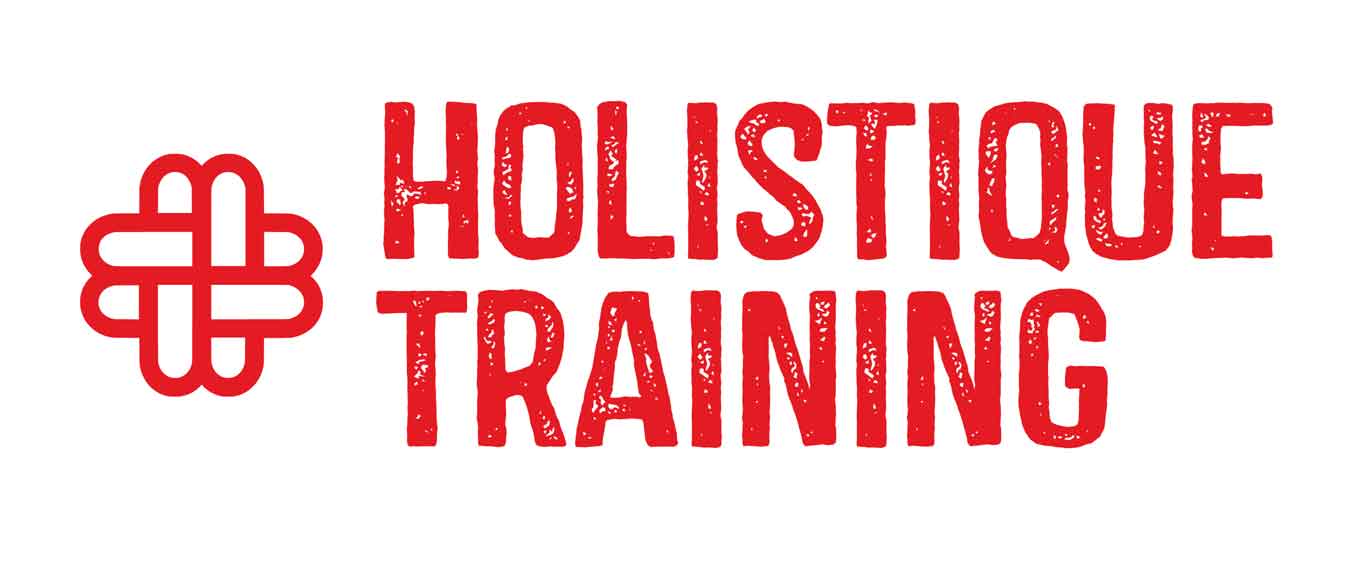- Table of Contents
- 1. Introduction
- 2. What is a Work Breakdown Structure (WBS)?
- 3. Why WBS is Crucial in Project Management
- 4. Core Principles of WBS
- 1.100% Rule:
- 2. Mutually Exclusive Elements:
- 3. Deliverable-Oriented Breakdown:
- 4. Level of Detail:
- 5. Rule of Decomposition:
- 6. Code of Accounts
- 5. Types of WBS
- 1. Deliverable-Oriented WBS
- 2. Phase-Oriented WBS
- 3. Organizational-Oriented WBS
- 4. Geographical-Oriented WBS
- 5. Cost-Oriented WBS
- 6. How to Create a WBS (Step-by-Step)
- 1. Define the Project Scope and Objectives
- 2. Identify Major Deliverables or Project Phases
- 3. Break Down Each Deliverable Into Smaller Components
- 4. Assign Codes Using the Code of Accounts
- 5. Validate With Stakeholders
- 6. Create the WBS Diagram
- 7. Update as Needed During the Project
- 7. WBS Examples from Different Industries
- 8. WBS Best Practices
- 9. Common Mistakes to Avoid
- 11. Conclusion
1. Introduction
In the fast-paced world of project management, clarity is key. When teams lose sight of the bigger picture, or worse, the details, projects slip through the cracks. One powerful tool that helps bridge the strategic with the tactical is the Work Breakdown Structure (WBS). Whether you're launching a product, building a house, or executing a marketing campaign, a well-structured WBS can be the difference between success and chaos.
In this in-depth guide, we’ll explore what WBS is, why it matters, its different types, how to build one, and what it looks like in action. We’ll also provide real examples, tables and best practices to help you master this indispensable tool.
2. What is a Work Breakdown Structure (WBS)?
A Work Breakdown Structure (WBS) is a hierarchical decomposition of a project into manageable sections or deliverables. It breaks down high-level objectives into smaller tasks or components until each piece can be assigned, scheduled, and budgeted.
Think of WBS as amap for project success. It shows:
- What needs to be done
- Who is doing it
- When it needs to be done
It transforms complex projects into organized units of work, often displayed in a tree format or numbered list.
3. Why WBS is Crucial in Project Management
Here’s why every successful project manager swears by WBS:
Benefit | Description |
Clarity | Provides a clear view of the project scope |
Task Management | Breaks down large deliverables into bite-sized tasks |
Responsibility Allocation | Helps assign roles and resources effectively |
Better Estimation | Facilitates accurate time and cost estimates |
Progress Tracking | Enables efficient progress monitoring |
Risk Management | Makes it easier to identify risks in specific work packages |
A well-structured WBS doesn’t just make project execution smoother, it’s often a requirement for successful planning in certified project management practices. Mastering how to break down work into manageable components is a key competency in globally recognized frameworks. For example, thePMP® (Project Management Professional) certification places strong emphasis on WBS as a tool to define and control project scope. If you're considering professional development in this field, a course like“Preparation for Project Management Professional (PMP®) Certification” can offer deeper insights into how WBS is applied in real-world scenarios, aligned with industry standards.
4. Core Principles of WBS
Creating a Work Breakdown Structure (WBS) isn’t just about drawing boxes or listing tasks. It’s about following core principles that ensure the project’s scope is fully captured, clearly communicated, and efficiently managed. Let’s explore these principles and how they form the foundation of successful project planning.
To get the most from your WBS, follow these principles:
1. 100% Rule:
The 100% Rule is the cornerstone of a solid WBS. It states that the WBS must include100% of the project scope, everything that needs to be delivered, and nothing extra. This includes all internal, external, and interim deliverables. Elaborating on this, the rule ensures no work is overlooked or duplicated. Whether you’re managing a single sprint in an agile environment or a multi-year infrastructure project, every component must be accounted for. This clarity avoids scope creep and keeps expectations aligned.
2. Mutually Exclusive Elements:
Each element in a WBS must be distinct and non-overlapping. This means tasks should not be repeated under different branches of the hierarchy. By ensuring mutually exclusive elements, the WBS avoids duplication, confusion, and redundant reporting. Think of it like writing a table of contents, each chapter covers its own theme without repeating another. This separation enhances accountability, as each task is clearly owned and measured. This principle is particularly important in agile and hybrid project environments, where workstreams can become entangled. Courses like “Advanced Agile Project Management” provide insight into maintaining clarity across multiple, overlapping teams and workflows.
3. Deliverable-Oriented Breakdown:
A WBS should always be deliverable-focused, not activity-focused. In other words, each work package or branch should reflect something tangible that the project will produce, not the actions taken to get there. This helps keep the focus on outcomes rather than busywork.
For example, instead of listing “coding” or “testing,” a better breakdown would include deliverables like “User Authentication Module” or “Final QA Report.” This focus ensures each component contributes directly to the project's goals.
The “Project Management with Primavera P6” course emphasizes this approach by aligning deliverables with schedules and resource plans, making it easier to track progress at every level of the WBS.
4. Level of Detail:
One of the most practical principles of WBS is choosing the right level of detail. Break tasks down just enough to manage, assign, and track them efficiently, but not so much that you drown in minutiae.
This balance is where experienced project managers shine. A good rule of thumb is: if a task can be estimated, assigned, and tracked by a single person or team, it's at the right level.
5. Rule of Decomposition:
The Rule of Decomposition involves breaking down project deliverables into smaller, more manageable components until they reach a level suitable for effective planning and control. This process ensures that each task or work package is clearly defined and can be accurately estimated in terms of time, cost, and resources.
Key Considerations:
- Granularity: Decompose work to a level where tasks are neither too large to manage nor too small to become inefficient.
- Clarity: Each work package should have clear deliverables and objectives.
- Accountability: Assign responsibility for each work package to ensure ownership and tracking.
According to the Practice Standard for Work Breakdown Structures by the Project Management Institute (PMI), the decomposition process is crucial for effective project management as it provides a structured vision of the project, facilitating better control over each component.
For instance, in software development, the decomposition might start with the overall system, break down into subsystems, then modules, and finally individual components or features. This hierarchical breakdown allows for detailed planning and efficient resource allocation.
6. Code of Accounts
A Code of Accounts is a numeric or alphanumeric coding system that uniquely identifies each component of the WBS. This system facilitates efficient tracking, reporting, and integration with other project management processes such as scheduling and budgeting.
Benefits:
- Organization: Provides a structured framework for organizing project information.
- Traceability: Enables tracking of work packages throughout the project lifecycle.
- Integration: Aligns with accounting and financial systems for cost management.
As highlighted by the Project Management Knowledge database, the Code of Accounts allows for easy distinction between multiple components of a project without the need to remember lengthy names or terminologies.
For example, in a construction project, the foundation work might be coded as 1.1, framing as 1.2, and roofing as 1.3. This coding not only simplifies identification but also assists in aggregating costs and schedules associated with each segment.
5. Types of WBS
A Work Breakdown Structure (WBS) is a foundational tool in project management, systematically dividing a project into manageable sections. The structure of a WBS can vary based on the project's nature, goals, and management approach. Understanding the different types of WBS is crucial for selecting the most effective framework for your project. The primary classifications include:
- Deliverable-Oriented WBS.
- Phase-Oriented WBS.
- Organizational-Oriented WBS.
- Geographical-Oriented WBS.
- Cost-Oriented WBS.
Let's delve into each type, providing detailed explanations, examples, and references to enhance comprehension.
1. Deliverable-Oriented WBS
This approach structures the WBS around the project's tangible outputs or deliverables. Each major deliverable is broken down into its constituent components, ensuring that all necessary work to produce the deliverable is identified and organized.
Example WBS: Building a Website
1. Website Development
1.1 Design:
▪ 1.1.1 Wireframes
▪ 1.1.2 Mockups
1.2 Content Creation
▪ 1.2.1 Text
▪ 1.2.2 Images
▪ 1.2.3 Videos
1.3 Development
▪ 1.3.1 Front-End Coding
▪ 1.3.2 Back-End Integration
1.4 Testing
▪ 1.4.1 Usability Testing
▪ 1.4.2 Bug Fixes
In this structure, the focus is on the end products, facilitating clear assignment of responsibilities and tracking of progress. This method aligns with PMI's definition of a WBS as a "deliverable-oriented hierarchical decomposition of the work to be executed by the project team."
2. Phase-Oriented WBS
Also known as a process-oriented WBS, this type organizes the project based on its phases or stages, with each phase encompassing specific tasks and deliverables. This structure is particularly useful for projects that follow a linear progression.
Example WBS: New Product Development
1. New Product Development
1.1 Concept Development
▪ 1.1.1 Market Research
▪ 1.1.2 Feasibility Study
1.2 Design
▪ 1.2.1 Prototype Creation
▪ 1.2.2 Design Testing
1.3 Production
▪ 1.3.1 Manufacturing
▪ 1.3.2 Quality Assurance
1.4 Launch
▪ 1.4.1 Marketing Campaign
▪ 1.4.2 Distribution
By structuring the WBS according to phases, project managers can ensure that each stage is thoroughly planned and executed before moving to the next. This approach is beneficial for maintaining focus and ensuring that prerequisites are met at each stage.
3. Organizational-Oriented WBS
This structure aligns the WBS with the organization's departments or units, assigning project tasks based on the existing organizational framework. It's advantageous for projects that require cross-departmental collaboration and resource allocation.
Example WBS: Construction Project
1. Construction Project
1.1 Engineering Department
▪ 1.1.1 Structural Design
▪ 1.1.2 Electrical Planning
1.2 Procurement Department
▪ 1.2.1 Material Sourcing
▪ 1.2.2 Vendor Contracts
1.3 Construction Team
▪ 1.3.1 Site Preparation
▪ 1.3.2 Building Erection
Organizing the WBS in this manner facilitates clear communication and accountability within the organization's existing hierarchy. It also aids in resource planning and conflict resolution among departments.
4. Geographical-Oriented WBS
For projects that span multiple locations, a geographical-oriented WBS organizes work based on physical locations or regions. This is particularly useful for large-scale infrastructure projects or multinational initiatives.
Example WBS: International Marketing Campaign
1. International Marketing Campaign
1.1 North America
▪ 1.1.1 Market Analysis
▪ 1.1.2 Campaign Execution
1.2 Europe
▪ 1.2.1 Market Analysis
▪ 1.2.2 Campaign Execution
1.3 Asia
▪ 1.3.1 Market Analysis
▪ 1.3.2 Campaign Execution
This structure allows project managers to tailor strategies and allocate resources effectively based on regional requirements and cultural considerations.
5. Cost-Oriented WBS
Also known as a cost breakdown structure (CBS), this type focuses on the project's financial aspects, organizing tasks and deliverables based on cost categories. It's instrumental in budgeting and financial monitoring.
Example WBS: Event Planning
1. Event Planning
1.1 Venue Costs
▪ 1.1.1 Rental Fees
▪ 1.1.2 Insurance
1.2 Marketing Costs
▪ 1.2.1 Advertising
▪ 1.2.2 Promotional Materials
1.3 Operational Costs
▪ 1.3.1 Staffing
▪ 1.3.2 Equipment Rental
By aligning the WBS with cost categories, project managers can track expenditures more accurately and ensure financial accountability throughout the project lifecycle.
Choosing the Appropriate WBS Type
Selecting the appropriate Work Breakdown Structure (WBS) type is crucial for effective project management. The choice depends on factors such as project scope, complexity, stakeholder preferences, and organizational practices. A well-chosen WBS enhances clarity, facilitates efficient resource allocation, and improves project monitoring and control. Understanding the nuances of WBS is integral to project management excellence, and proficiency in this area is often emphasized in professional certifications. To delve deeper into the importance of WBS and its role in project management, read “Your Guide to Earning the PMP Certification”
6. How to Create a WBS (Step-by-Step)
Creating a WBS is not just about drawing boxes on a chart, it’s a strategic process that helps you translate project goals into manageable tasks. Below is a step-by-step guide to building an effective WBS, with detailed explanations and examples at every stage.
1. Define the Project Scope and Objectives
Before breaking anything down, you must have a crystal-clear understanding of what the project aims to achieve.
- Why it matters: The WBS is only as accurate as your project scope. If the scope is vague, the breakdown will be flawed.
- Example: If your project is to "Develop a Mobile Banking App", your scope should clarify whether it includes UI/UX, backend infrastructure, testing, deployment, etc.
2. Identify Major Deliverables or Project Phases
Once the project scope is clear, identify the highest level components, these can be phases, departments, or key deliverables.
- Deliverable-Based: Useful when outcomes are clear (e.g., "Design", "Development", "Testing", "Deployment").
- Phase-Based: Better when your project follows a lifecycle (e.g., "Initiation", "Planning", "Execution", "Closure").
According to the PMI WBS Standard, these top-level elements are known as "Level 1 Elements".
3. Break Down Each Deliverable Into Smaller Components
This is where decomposition comes in. You take each Level 1 component and break it down into smaller parts until each work package: Is manageable, Can be estimated accurately and Can be assigned to a team or an individual
For example, under “Development” you might have:
- Front-End Development:
Login Page, Dashboard Interface - Back-End Development:
Database Setup, API Integration
The goal is to go as deep as necessary, but not deeper than needed.
Tip: If a task will take longer than a reporting period (say, 2 weeks), it should probably be broken down further.
4. Assign Codes Using the Code of Accounts
Each WBS element should be given a unique identifier, often numeric or alphanumeric, that makes tracking easier. Example:
- 1.0: Project Management
- 2.0: Design
- 2.1: Wireframes
- 2.1.1: Home Page Wireframe
This coding helps in mapping resources, costs, and schedules in tools like MS Project or Primavera.
For practical tips on using Primavera P6 more efficiently, check out the article Efficient Project Management: 10 Tips for Primavera P6.
5. Validate With Stakeholders
Before finalizing your WBS, validate it with: Project sponsors, Department heads, and Team leads. Ask:
- Are all deliverables included?
- Is anything redundant or unclear?
- Can each team confidently estimate their parts?
Tip: Conduct a WBS review session and ask stakeholders to identify any gaps or overlaps.
6. Create the WBS Diagram
Once finalized, represent your WBS visually using a hierarchical chart or tabular format.
You can use tools like:
- Microsoft Visio
- Lucidchart
- SmartDraw
- ClickUp,Trello (for more agile, digital boards)
If you’re preparing for more advanced project management roles, this is also a good moment to explore how WBS fits into scheduling and resource planning, a topic explored in PMI’s PMP framework.
7. Update as Needed During the Project
Though WBS is typically created during planning, it shouldn’t be static. As the scope or resources change, your WBS might need to be refined. Example: If a feature is dropped mid-project or a new compliance requirement is added, you should reflect these changes in the WBS.
Make sure updates are communicated to all stakeholders and documented properly to avoid scope creep.
Bonus Tip: Use Templates When Appropriate: If your organization regularly completes similar projects (like marketing campaigns, software rollouts, or construction builds), you can develop WBS templates to streamline future planning.
Next up, we’ll explore WBS Examples to show how this theory translates into real-world project planning, from tech and construction to events and marketing. Let me know if you'd like that section next!
7. WBS Examples from Different Industries
Industry | Project | Sample Deliverables |
Construction | Residential Building | Foundation, Framing, Roofing, Interior |
IT | Software Development | UI/UX, Backend, API Integration, QA |
Marketing | Campaign Launch | Research, Content Creation, Ads, Analytics |
Education | Course Development | Curriculum, Materials, LMS Setup, Assessment |
8. WBS Best Practices
Creating an effective Work Breakdown Structure (WBS) takes more than just listing tasks. Think of it as dissecting a complex puzzle into smaller, comprehensible pieces. Each piece represents a specific task or activity. Here are some best practices to guide you:
- Use nouns, not verbs: Focus on deliverables or tangible outputs rather than actions. For example, use “Design Documents” instead of “Create Design.”
- Limit levels: Keep your WBS to 3–4 levels deep. Too many layers can complicate management and tracking, while too few may miss important details.
- Keep it visual: A tree or hierarchical chart format makes it easier for stakeholders to understand structure, dependencies, and scope at a glance.
- Align with project scope: Ensure every WBS element directly ties back to what's defined in the project scope statement. This keeps work focused and avoids scope creep.
- Engage team members: Involve those who will actually be doing the work; their input helps improve accuracy, accountability, and ownership.
- Use templates when possible: Save time and maintain consistency by adapting WBS templates from previous or similar projects.
9. Common Mistakes to Avoid
- Confusing WBS with task lists: A WBS breaks down deliverables, not individual tasks. It’s about “what” needs to be produced, not “how” or “when.”
- Going too deep or not deep enough: An overly detailed WBS becomes difficult to manage, while a shallow one may miss key deliverables. Aim for clarity and completeness without overcomplicating.
- Skipping validation: Always review the WBS with stakeholders and team members to make sure nothing has been missed and everything aligns with the project objectives.
- Not aligning with scope: If the WBS includes elements outside the agreed scope, it can lead to wasted effort, budget overruns, or client dissatisfaction.
- Poor numbering systems: Inconsistent or unclear coding can confuse tracking efforts in project management tools. Use a structured Code of Accounts to keep things organized.
11. Conclusion
A well-built Work Breakdown Structure isn’t just a planning document, it's the backbone of effective project management. It helps break complexity into clarity, aligning team members and stakeholders under a shared vision. Whether you're delivering a product, running a campaign, or constructing a skyscraper, WBS can elevate your control, visibility, and efficiency.
By following the steps and examples above and avoiding common pitfalls, you'll be well-equipped to implement WBS into your own workflow and maximize your project’s success.























